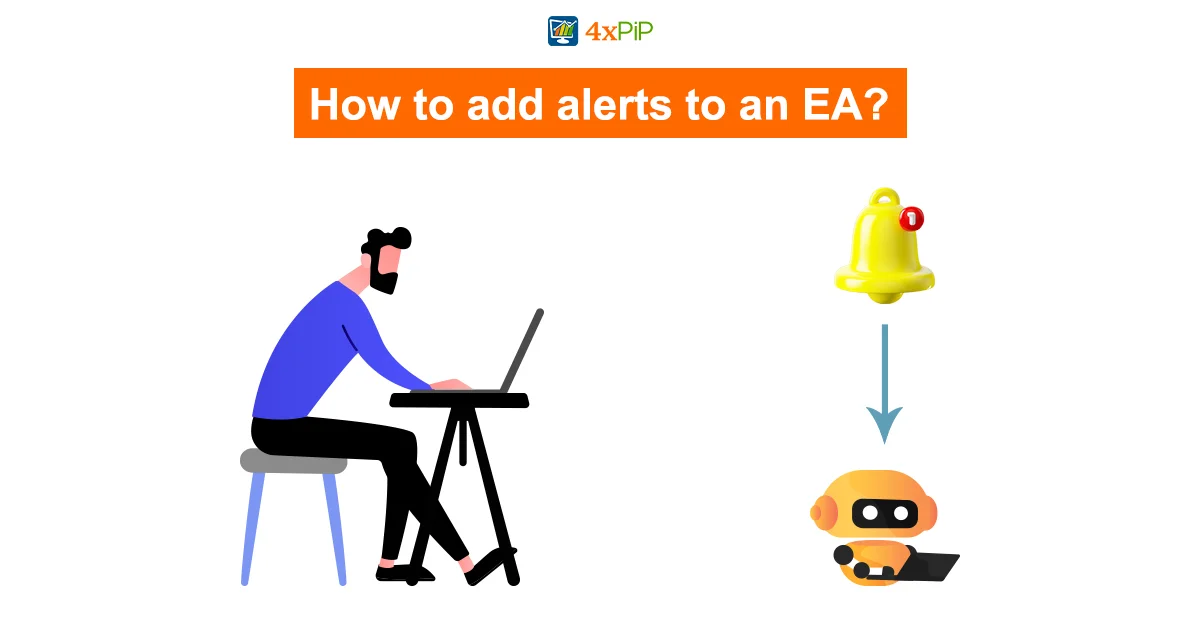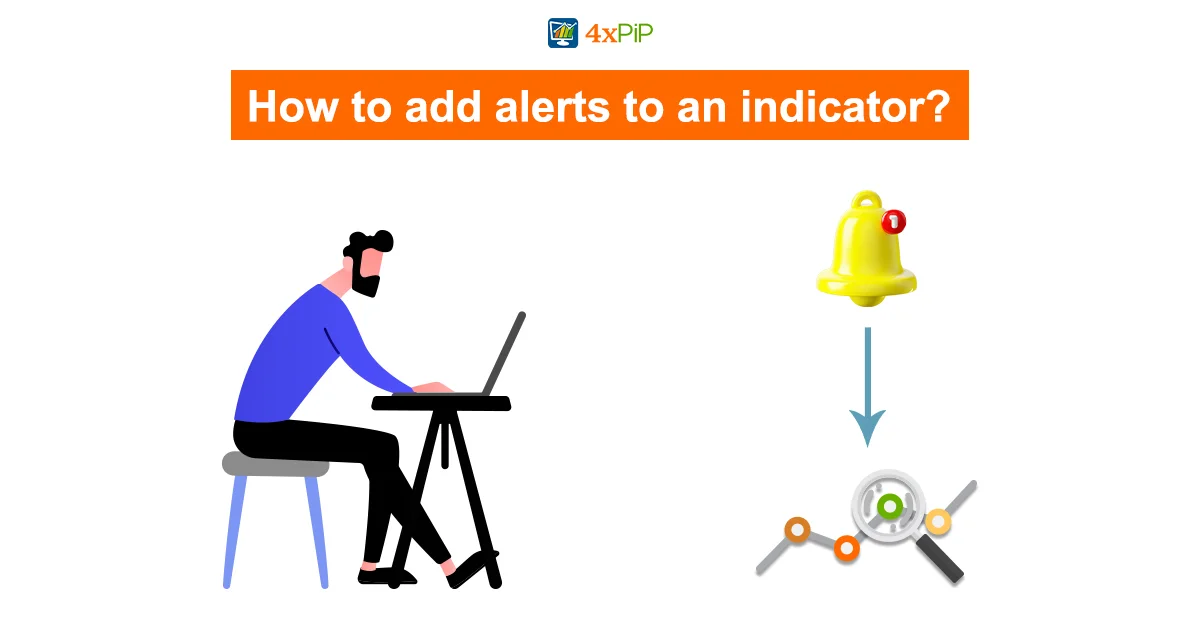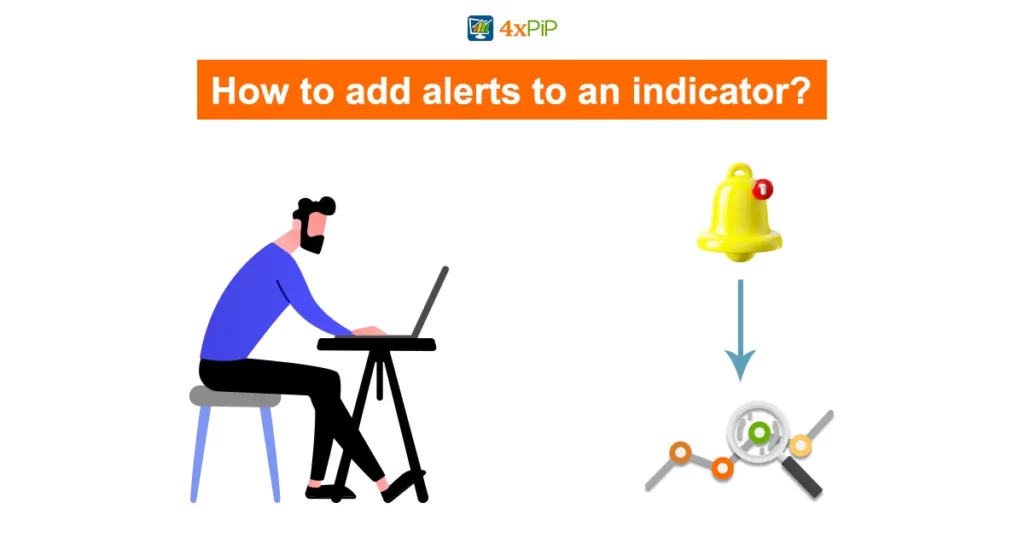In the trading world, it’s crucial to know important market events. Make your trading better by easily adding alerts to your indicators, Expert Advisors, and overall trade plans. At 4xpip, we’re here to help traders. Check out our products at 4xpip and reach our team at [email protected] for more help.
To start, adding alerts to an indicator involves a step-by-step process. Here’s a simple breakdown:
Set Up Alerts: Begin by adjusting settings to easily turn alerts on or off. This step is optional but makes future setups easier.
Find Data Source: Identify the specific data in the indicator that you want to receive alerts about. This helps define when alerts should be triggered.
Specify Alert Conditions: Clearly state the conditions that will trigger alerts. For example, if you’re setting up a buy alert for the MACD, conditions could include the MACD Signal being below the MACD Main, and both being below zero.
Coding Skills Needed: Keep in mind that adding alerts requires some coding knowledge. You need access to the indicator’s source code and a basic understanding of coding, like compiling an indicator or defining variables.
How to Add Alerts to an EA?

Adding alerts to an EA involves specific steps within the MT4 platform:
Navigate EA Properties: Open the EA’s properties and proceed to the ‘Inputs’ tab, where you’ll find options to enable alerts and notifications.
Utilize SendMail() Function: Employ the built-in SendMail() function to trigger an email alert when the EA initiates a trade.
Example Code Snippet: A sample code snippet demonstrates sending an email alert when the EA opens a trade. This includes defining conditions and utilizing the SendMail() function.
How Do I Set Trade Alerts?
Configuring trade alerts involves a platform-specific approach. General steps include:
Access Your Trading Platform: Open your trading platform and navigate to the desired instruments for which you want to set up alerts.
Identify Key Price Levels: Pinpoint specific price levels, such as support or resistance, to receive alerts for significant market events.
Configure Alert Settings: Set up alerts through the platform’s alert button, specifying notification methods, alert frequency, and trigger conditions.
How to Set Alerts via MQL4 and MQL5?
Setting alerts in MQL4 and MQL5 requires a grasp of coding basics and utilizing the Alert() function:
Use Alert() Function: Implement the Alert() function to display messages in a separate window when specific conditions, like price crossing a certain level, are met.
Customize Alert Messages: Tailor alert messages according to your preferences by adjusting the string argument in the Alert() function.
Email Alerts with SendMail(): For email alerts in MQL4, leverage the SendMail() function. This involves configuring email settings within the 4 platform.
Key Considerations for Effective Alerts:
Identify Key Events: Clearly decide what events you want alerts for, like changes in prices, trends, or other indicators.
Determine Notification Method: Choose if you want alerts through email, SMS, or push notifications based on what you like and how you trade.
Thorough Testing: Before using alerts for actual trades, test them a lot in different market situations on a practice account.
Consider Third-Party Services: Add extra features to your alert system by using third-party services, like alerts through social media or messaging apps.
Add extra features to your alert system by using third-party services, like alerts through social media or messaging apps.
Common Challenges in Implementing Alerts:
Despite the advantages of trade alerts, traders may encounter challenges in their implementation. These challenges include:
False Alarms: Sometimes, alert systems give false signals because of market noise or sudden price changes. Adjust your alert settings carefully to minimize these false signals.
Technical Glitches: Problems with your platform or code can mess up your alerts. Keep your platform updated and fix any issues with your code to make sure your alert system works smoothly.
Overreliance on Alerts: Only depending on alerts for trading decisions can cause problems. Use alerts as a helper to your analysis, not as the main thing.
Advanced Alert Strategies for Seasoned Traders:
For traders seeking more sophisticated alert strategies, advanced approaches can be explored:
Set Alerts for Different Timeframes: Get alerts that consider various periods to understand the market better. This helps you spot important trends and possible changes in direction.
Combine Different Alerts: Mix alerts from different indicators to create a thorough alert system. By using signals from momentum, volume, and trend indicators, you get a clearer picture of what’s happening in the market.
Event-Linked Alerts: Connect alerts with economic events or news releases that can affect the market. This helps you stay ahead by knowing about potential market-moving events.
Use Conditional Orders: Set up orders that automatically execute trades based on specific conditions. This smart strategy makes trading more automated and disciplined.
Summary:
Improve how you trade by using our simple guide on setting up alerts for indicators, EAs, and trade plans. Go to 4xpip for products and email [email protected] for help. The guide explains how to set up alert settings, find indicator buffers, and set conditions. To add alerts to EAs in MetaTrader 4, use the SendMail() function. For platform-specific steps, like identifying price levels, set trade alerts. For MQL4 and MQL5, use the Alert() function and SendMail() for email alerts. Consider defining events, choosing notification methods, and testing carefully. Challenges include false alarms, technical issues, and relying too much on alerts. Advanced strategies for experienced traders involve multi-timeframe alerts, combination alerts, event-driven alerts, and conditional orders.












